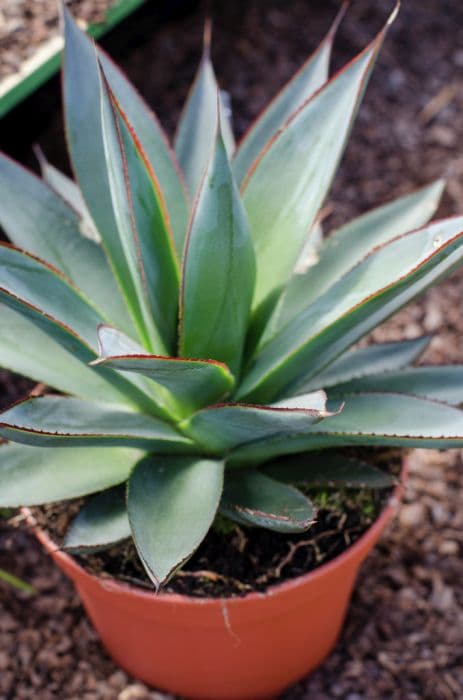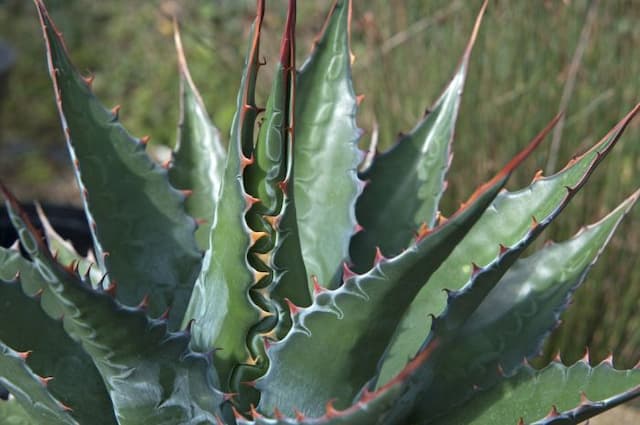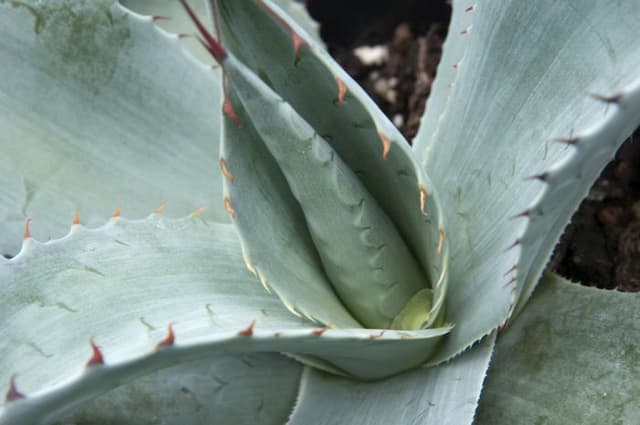Forbes' Glory-of-the-snow Scilla forbesii

ABOUT
Scilla forbesii, also known as Forbes' Glory-of-the-Snow, is a charming, early-spring flowering plant. This plant is distinguished by its delicate star-shaped flowers that carry a striking light to bright blue color, often with a softer, almost white center. The blooms are arranged in loose clusters that gracefully nod to one side, presenting a captivating and pleasant appearance. The foliage of Forbes' Glory-of-the-Snow consists of slender, glossy green leaves that emerge from the base of the plant, forming a tufted groundcover beneath the flowers. These leaves are slightly fleshy and have a linear to lance-shaped form, which adds to the plant's overall visual appeal by providing a fresh green contrast to the vivid blues and whites of the flowers. Each individual flower is composed of six pointed petals that flare outwards from the center, creating a shape reminiscent of stars twinkling in the spring sky. The beauty of Scilla forbesii lies in its simple yet striking floral display that can carpet an area, giving the impression of a light blue to a violet-blue 'snowfall' that blankets the ground where it is planted. Its visual impact is enhanced when planted in drifts, where the soothing color tones can truly be appreciated. The plant's overall charm is a result of the combination of its blooms, foliage, and the way it naturally spreads to create a field of color that is one of the first signs of spring's arrival.
About this plant
 Names
NamesFamily
Asparagaceae
Synonyms
Forbes' Glory-of-the-Snow, Forbes' Scilla
Common names
Scilla forbesii, Chionodoxa forbesii, Chionodoxa siehei.
 Toxicity
ToxicityTo humans
Forbes' glory-of-the-snow is not commonly listed as a toxic plant to humans. However, as with many plants, it may cause mild stomach upset if ingested. It's always best to avoid eating plants unless you are certain of their safety, as even non-toxic plants can cause unpleasant reactions in some individuals. If symptoms do appear after ingestion, seek medical attention.
To pets
Forbes' glory-of-the-snow is considered mildly poisonous to pets. Ingestion can lead to symptoms such as vomiting, diarrhea, and generally upset stomach due to the presence of saponins and other potentially irritating compounds. If you suspect your pet has eaten this plant, consult with your vet to ensure proper care and treatment.
 Characteristics
CharacteristicsLife cycle
Perennials
Foliage type
Deciduous
Color of leaves
Green
Flower color
Blue
Height
6 inches (15 cm)
Spread
3 inches (7.6 cm)
Plant type
Bulb
Hardiness zones
Varies
Native area
Turkey
Benefits
 General Benefits
General Benefits- Eco-friendly landscaping: Scilla forbesii, commonly known as Forbes' Glory-of-the-Snow, adds natural beauty to gardens without the need for harmful pesticides or fertilizers.
- Supports biodiversity: It provides food and habitat for pollinators such as bees and butterflies, which are essential for the pollination of many other plants.
- Low maintenance: Once established, it requires minimal care, making it an ideal plant for both novice and experienced gardeners.
- Spring bloom: It brings early spring color to gardens and landscapes, often being one of the first flowers to bloom after winter.
- Naturalizes easily: This plant can spread and propagate on its own, creating beautiful blue flowering carpets in the right conditions.
- Drought tolerance: It is relatively drought-tolerant once established, reducing the need for regular watering.
- Cold hardiness: Forbes' Glory-of-the-Snow can survive cold winters, making it suitable for gardens in cooler climates.
- Versatility: This plant can be grown in a variety of settings, including rock gardens, borders, and woodland settings.
 Medical Properties
Medical PropertiesThis plant is not used for medical purposes.
 Air-purifying Qualities
Air-purifying QualitiesThis plant is not specifically known for air purifying qualities.
 Other Uses
Other Uses- Scilla forbesii, commonly known as Forbes' glory-of-the-snow, has bulbs that can be used as a starch substitute in traditional recipes, although this is not commonplace today.
- The crushed bulbs have been historically used as a glue or adhesive, especially for fixing feathers and other small objects in traditional crafts.
- The flowers can be used as a natural dye for fabrics, providing a light blue tint to textiles when used in the dyeing process.
- The plant can be used in ornamental crafts, such as being pressed and included in handmade paper for a decorative element.
- During certain festivals or cultural events, the flowers of Forbes' glory-of-the-snow might be woven into garlands or decorative wreaths.
- In winter gardens, Forbes' glory-of-the-snow can provide a splash of color and are used to create intricate landscape patterns when planted en masse.
- The leaves of the plant, when dried, can be used to add texture and visual interest to dry floral arrangements.
- Photographers and artists might use these unique blooms as subjects for botanical art and photographic studies due to their early spring appearance.
- The plant's tendency to naturalize can be harnessed for erosion control on sloped landscapes, assisting in soil stabilization with its root system.
- Educators and parents can use Forbes' glory-of-the-snow as a plant for children's gardens, teaching them about plant life cycles and early spring bloomers.
Interesting Facts
 Feng Shui
Feng ShuiThe Squill is not used in Feng Shui practice.
 Zodiac Sign Compitability
Zodiac Sign CompitabilityThe Squill is not used in astrology practice.
 Plant Symbolism
Plant Symbolism- Persistence: Scilla forbesii, commonly known as Glory-of-the-Snow, often breaks through the snow in early spring, symbolizing persistence and the ability to overcome challenges.
- Hope: Its early bloom signifies hope and the promise of the coming spring after long, harsh winters.
- Beauty: The delicate and attractive flowers of the Glory-of-the-Snow symbolize beauty and appreciation for the subtler aspects of nature.
- New Beginnings: The plant's propensity to be one of the first to bloom in spring represents new beginnings and fresh starts.
 Water
WaterForbes' Glory-of-the-Snow should be watered moderately during the active growth phase, generally in spring when the leaves and flowers are developing. Allow the top inch of the soil to dry out before watering again. Typically, this may mean watering once every week or two with about 8-16 ounces, depending on the size of the pot and the environmental conditions such as temperature and humidity. During dormancy, after the foliage has died back, reduce watering significantly to a minimum, just enough to keep the bulbs from drying out completely.
 Light
LightForbes' Glory-of-the-Snow thrives in partial shade to full sun, so the best spot for the plant is somewhere that gets morning sun and afternoon shade, or a place with dappled sunlight throughout the day. Avoid locations where the midday sun is too harsh, as it may cause the leaves to scorch.
 Temperature
TemperatureForbes' Glory-of-the-Snow prefers a temperate climate with ideal growing temperatures between 60 and 70 degrees Fahrenheit. They can survive a range within 50 degrees Fahrenheit during growing season and can tolerate winter cold down to 20 degrees Fahrenheit. It is important to avoid extremely hot or freezing temperatures to maintain plant health.
 Pruning
PruningForbes' Glory-of-the-Snow does not require regular pruning. However, after the flowers have faded, you can deadhead the spent blooms to maintain a neat appearance. Allow the leaves to remain until they yellow and die back naturally, as they provide energy to the bulbs for the next flowering season. Pruning is not typically required at any other time.
 Cleaning
CleaningNot needed
 Soil
SoilChionodoxa forbesii, commonly known as Glory-of-the-snow, prefers well-drained soil with a mix of loam, peat, and sand to ensure good drainage. A slightly acidic to neutral pH between 6.0 to 7.0 is ideal for this plant.
 Repotting
RepottingGlory-of-the-snow seldom needs to be repotted as it is often grown as a garden plant, but if potted, do so every 2-3 years to refresh the soil.
 Humidity & Misting
Humidity & MistingGlory-of-the-snow thrives in moderate humidity levels typical of outdoor conditions, without special requirements.
 Suitable locations
Suitable locationsIndoor
Place in well-lit area, well-draining soil, water moderately.
Outdoor
Plant in partial shade, well-draining soil, mulch in winter.
Hardiness zone
3-8 USDA
 Life cycle
Life cycleScilla forbesii, commonly known as Forbes’ glory-of-the-snow, begins its life cycle from a bulb, which overwinters underground. In late winter to early spring, the bulb gives rise to narrow, basal leaves and a flowering stem with star-shaped blue flowers. After pollination, typically by bees, the flowers produce small seed capsules. Once the seeds are ripe, they get dispersed, potentially leading to new plants if the conditions are suitable. The foliage dies back to the bulb after flowering, which remains dormant until the next spring. Through this annual cycle of growth, flowering, and dormancy, Forbes’ glory-of-the-snow perpetuates its presence in suitable garden and wild settings.
 Propogation
PropogationPropogation time
Spring
Propogation: The most popular method of propagation for Scilla forbesii, commonly known as Forbes' Glory-of-the-Snow, is through bulb division. This is typically done in late summer, after the foliage has died back, or in early fall before the ground freezes. To propagate, carefully lift the clump of bulbs from the ground using a garden fork, making sure to minimize damage to the bulbs. Gently separate the offsets, which are the small bulbs that form around the base of the mother bulb, ensuring each has a portion of the root system attached. These can then be replanted immediately at a depth of around 3 inches (approximately 7.5 centimeters) with the pointed end facing up, spaced around 2 to 3 inches (5 to 7.5 centimeters) apart in well-draining soil enriched with organic matter. Water the newly planted bulbs thoroughly to help establish them. This method enables the gardener to increase their stock of Scilla forbesii relatively easily and effectively.









